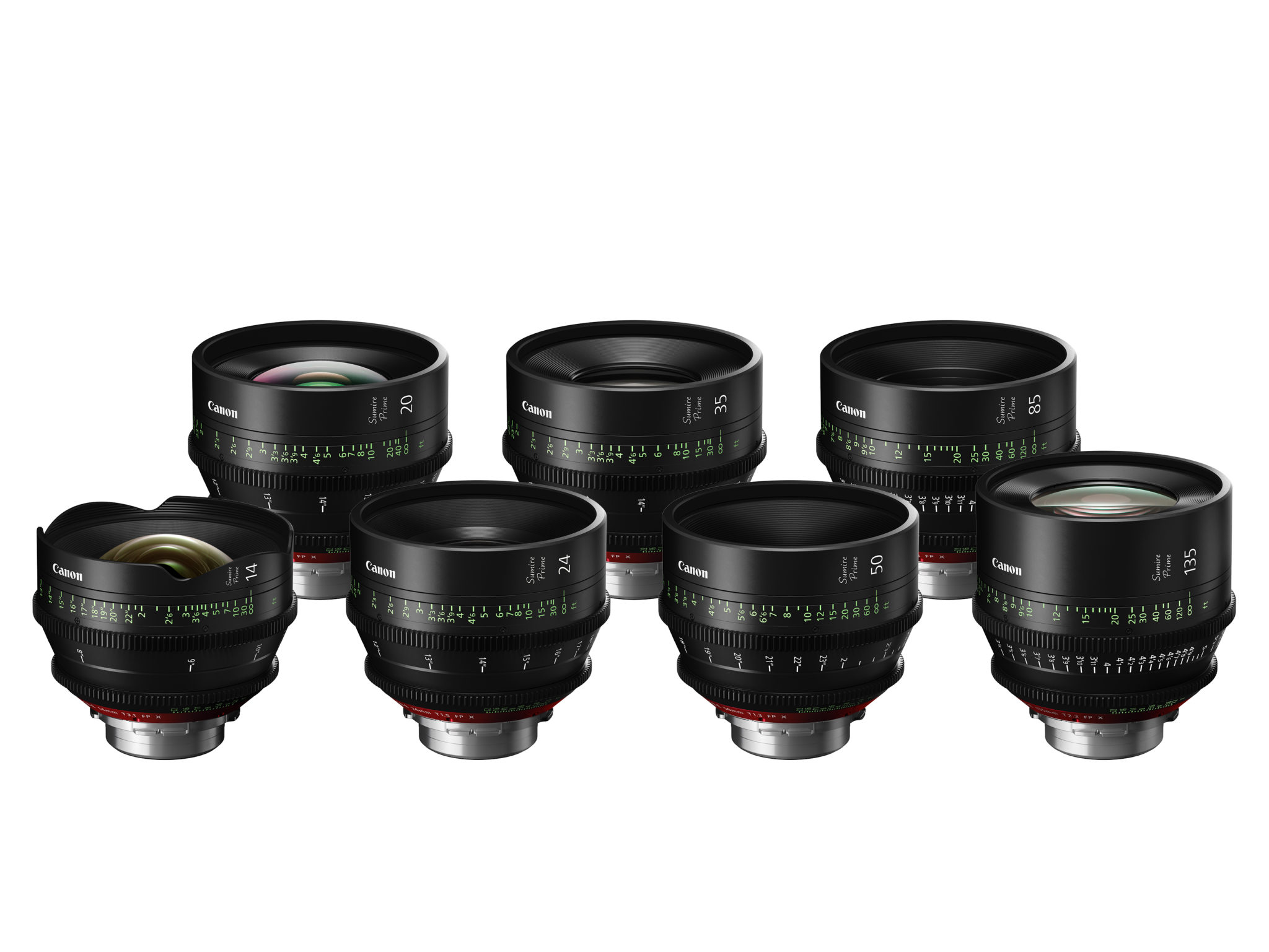In a departure, Canon says its new Sumire line of cinema prime lenses is designed to have a personality of its own.
Wikipedia tells us that the Japanese word sumire (pronounced soo-mee-ray) can have many different meanings, but Canon says the line of seven full-frame PL-mount cinema lenses is named after a Japanese flower. According to Tim Smith, Canon’s senior adviser for film and television production, the lenses are like the flower because it “gets more beautiful as it opens.”
Specifically, he said, the qualities of the Sumire lenses change as the aperture is widened, with the bokeh shifting to a “cats-eye” appearance and skin tones softening. “It’s a lens with character,” Smith said. “It’s a new type of approach for us. These are more for the creatives, and not as much for the engineers.”

Canon Sumire lens set
Canon USA
The Sumire lens range will include focal lengths ranging from 14mm to 135mm. The core set, including 24mm, 35mm, 50mm and 85mm, is expected to ship in August, followed by the 14mm sometime this fall, and the 20mm and 135mm arriving in late 2019 or early 2020.
Canon Sumire Prime Cinema Lenses
• CN-E14mm T3.1 FP X
• CN-E20mm T1.5 FP X
• CN-E24mm T1.5 FP X
• CN-E35mm T1.5 FP X
• CN-E50mm T1.3 FP X
• CN-E85mm T1.3 FP X
• CN-E135mm T2.2 FP X
Source: Canon
The lenses will make a good match for the Canon EOS C700FF Cinema Camera, with an image circle large enough to cover sensors up to the size of Red’s Monstro, Canon said. Smith didn’t rule out an EF version of the lenses, but said only PL versions are in the current plan. Users will, however, be able to convert Sumire lenses to EF mount (and back to PL again) at a Canon service center for an additional cost.
Each of the lenses has an 11-bladed iris, which Canon suggested would help create a “cinematic look with warmer colors,” and a 300-degree focus rotation angle and gear position.
The Sumire lenses address a trend among cinematographers toward vintage glass and other optics that lend their own properties to an picture — minor imperfections that help take the edge off a super-clean, high-resolution digital image (the vaunted “Cooke look,” for example).
“It’s a big step for Canon,” Smith said, “to approach lenses and image-making less from a test chart and more from a creative standpoint. It’s a breakaway piece of glass for us.”
Canon USA: usa.canon.com